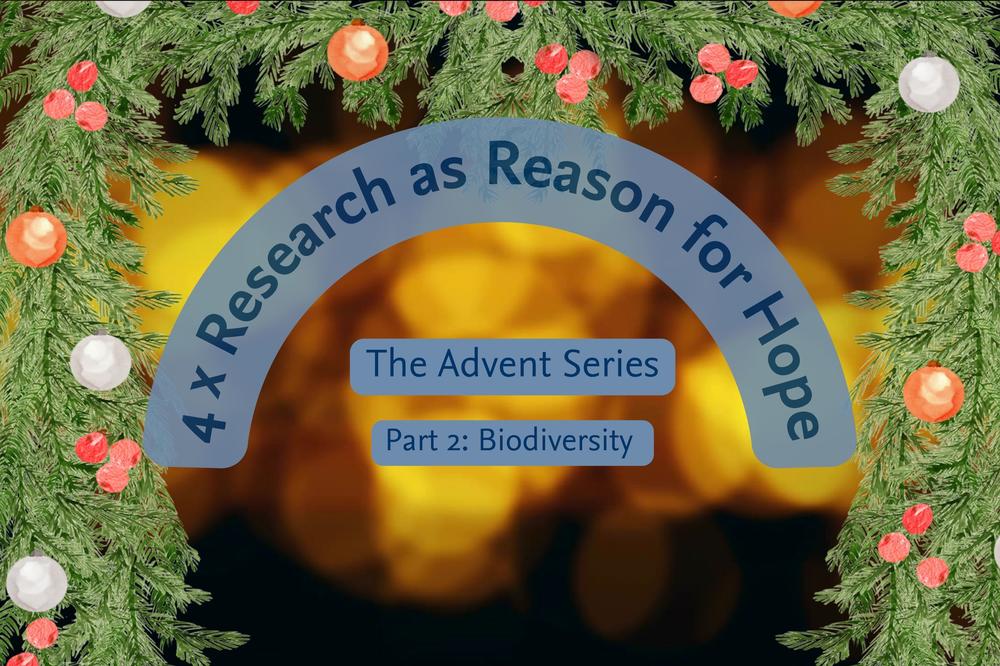“Urban areas are more biodiverse than you might expect”
4 x Research as Reason for Hope / Part 2: Research on Biodiversity
Dec 08, 2022
Not everything is as grim as it seems. During the Advent season, we are presenting four research topics that offer reason for hope.
Part 2 of Our Advent Series “4 x Research as Reason for Hope”: Interview with Biologist Rebecca Rongstock about positive developments in urban nature and butterflies on campus.
Ms. Rongstock, you are the coordinator and spokesperson for Freie Universität’s “Blossoming Campus” initiative. What is the goal of this project?
We want to show that social transformation is possible: people and biodiversity are not mutually exclusive. Habitats shaped by humans can have a high level of biodiversity, including a variety of species, communities, and habitats, among other things.
Does that also apply to cities?
Surprisingly, it does. Long after the end of World War II, Berlin for example, still had large abandoned areas. Today they are construction sites that often lie idle for a long time. Scientists have looked at these and other green spaces in the city and found that there is more biodiversity there than they expected. Berlin has played an important role in the development of urban ecology as a research field.
Studies show that rare species, as well as species that one would not initially suspect in urban areas, can establish themselves in cities. In Berlin, for example, there are still plant species, such as purple loosestrife or black alder, that originated during the city’s swamp times almost 1000 years ago.
Of course, that does not apply to urban areas that are completely covered with concrete. However, it does prove that moderate urbanization can go hand in hand with high biodiversity.
Rebecca Rongstock is the coordinator and spokesperson for Freie Universität’s “Blossoming Campus” initiative.
Image Credit: Franziska Runge
Do the scientists have any ideas on how construction measures can be implemented in such a way that animals and plants can be protected?
One obvious measure is to plan green areas that accommodate different types of plants and are rarely mowed. A relatively new approach is called “animal-aided design.” Following this approach when planning the building, architects take into account how the habitat of animals that live nearby can be preserved and supported. For example, nesting boxes for birds are integrated into houses, or hedgehog dwellings are created in the garden.
With all the measures it is important to be aware of the needs of plants and animals. For example, insect hotels are often erroneously placed where there are no forage plants for the target species nearby.
Many Berliners do not have their own yards, so they place great value on parks and other green spaces for recreation. The field of the former airport, Tempelhofer Feld, is very popular among young and old for various recreational purposes.
There are some interesting studies indicating how there is growing acceptance of wild areas among inhabitants of cities. They perceive the disorder of such fields more positively than manicured parks. That is advantageous because the disorder offers more living space for different living beings.
Do you have an overview of which creatures find a habitat in the rarely mowed (or even unmowed) meadows of the “Blooming Campus”?
Since May 2020 we have been conducting butterfly monitoring to follow the development of the butterfly population there. This year we counted 40 species of butterflies, which is wonderful.
The most suitable sections in the area around Van’t Hoff Street showed an approximately 18-fold increase in insects after one season, and a nearly 40-fold increase after two years.
Melanie Hansen conducted the interview. It was first published in German in campus.leben on December 2, 2022.


